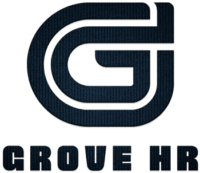I’m so glad you’re here because I’ve been thinking a lot lately about how we can make work feel less like a slog and more like something people actually want to show up for.
Employee engagement isn’t just some buzzword HR throws around—it’s the heartbeat of a happy, productive team.
And guess what?
Technology can be our secret weapon to get it right. I’ve seen it work wonders when done with a little heart and a lot of smarts.
So, let’s chat about how I’d go about boosting engagement using tech, based on what I’ve learned and seen out there.
Why Engagement Matters to Me

I’ve worked in places where people shuffled in, stared at their screens, and bolted at 5 p.m. It felt like a ghost town with Wi-Fi. Then I’ve been in spots where folks were buzzing—sharing ideas, laughing, and actually sticking around to finish something because they cared.
The difference? Engagement. When people feel connected to their work and their crew, they’re not just clocking hours—they’re building something. Tech can bridge that gap, especially now when half the workforce might be scattered across time zones or sipping coffee from their kitchen.
Engagement isn’t about forcing people to love their jobs. It’s about giving them tools that make their day easier, their voice heard, and their efforts noticed. I’m not here to sell you on some utopian dream—just practical stuff that’s worked for me and others I’ve talked to.
The Tech Toolbox I’d Reach For
So, what’s in my tech toolbox? Plenty! I’d start with stuff that’s already out there, tweak it to fit the team, and keep it simple. Here’s what I’ve got in mind:
- Collaboration Platforms: Tools like Slack or Microsoft Teams are my go-to. They’re like the office water cooler, but digital. People can chat quickly, share a meme, or brainstorm without clogging up email. I once saw a team go from radio silence to daily check-ins just because we set up a “Wins” channel where folks could brag a little.
- Recognition Software: Ever heard of Bonusly or Kudos? I love these. They let people give shoutouts to their coworkers for a job well done. Nothing fancy—just a “Hey, Sarah crushed that presentation” with some points they can cash in for coffee or gift cards. It’s small, but I’ve seen it light up faces.
- Feedback Apps: Something like SurveyMonkey or Culture Amp works wonders. I’d use them to pulse-check how folks are feeling. Anonymous, quick questions like “Feeling supported today?” keep me in the loop without anyone feeling cornered.
- Learning Platforms: Udemy, LinkedIn Learning—I’m obsessed. People want to grow, and giving them access to courses they can take on their own time says, “I see you, and I want you to get better.” I had a coworker once who learned Python during lunch breaks and ended up automating half our reports. Win-win.
The key? I’d pick tools that fit the vibe of the team. No point in tossing fancy tech at people who just need a solid group chat.
Getting People On Board
View this post on Instagram
Here’s where it gets real. Tech’s useless if no one uses it. I’ve made the mistake of rolling out a shiny new app, thinking everyone would jump in, only to find it gathering digital dust.
Lesson learned. Now, I’d focus on bringing people along with me.
First, I’d show them what’s in it for them. Not some corporate spiel—real stuff. “Hey, this app cuts your busywork in half” or “You can shout out your buddy and score a free lunch.”
People care when it’s personal. I’d also keep it low-pressure—maybe a quick demo over pizza or a five-minute video they can watch whenever.
Then there’s the listening part. I’d ask what they need. Maybe the sales team hates typing updates, so voice memos in Slack would rock their world.
Or the designers want a shared board like Trello to track projects. I’ve found that when people get a say, they’re way more likely to stick with it.
A Little Story From My Past
Let me tell you about a time I saw this play out. At an old gig, we had a crew that barely talked—everyone was heads-down, siloed. I brought in a simple tool, just a shared doc where we’d dump updates and kudos.
At first, crickets. But then one guy posted, “Thanks to Jen for saving my bacon on that deadline.” Jen replied with a goofy GIF, and suddenly, people were in there daily. Engagement spiked, and it wasn’t even “techy”—just a nudge to connect. That’s what I mean: small moves, big payoff.
Making Work Feel Human Again
Tech can sometimes feel cold, right? Screens, pings, endless notifications. But I think it can bring back that human spark if we use it right.
For me, it’s about connection. I’d set up virtual hangouts—nothing forced, just a “Coffee Chat” Zoom where people can show up with their dog or their messy hair. I’ve done it, and the random “Oh, you’re into hiking too?” moments bond people like glue.
Recognition’s huge too. I’ve seen managers forget to say “good job” because they’re swamped. Tech can step in—automate those pats on the back so no one’s overlooked. One team I knew had a bot that pinged everyone Friday to share a win. Sounds cheesy, but it became a ritual they loved.
And flexibility—huge. Tools like Asana or Monday.com let people work how they work best. I’m a night owl, so I’d die without something that lets me log progress at 2 a.m. without bugging anyone. Giving people that freedom? It’s like saying, “I trust you to get it done.”
The Data Backs Me Up
I’m not just winging it here. Studies I’ve come across—like from Gallup—say engaged teams are 21% more productive.
Another one from Harvard Business Review pointed out that companies using tech for recognition see turnover drop by 31%. Numbers aren’t my thing usually, but those stuck with me. It’s proof that what feels good also works.
Overcoming the Hiccups
@pearllemongroup Want to know how to create your own google form? Watch this video to find out! #fyp #google #googleform #pearllemon ♬ fashion show(256764) – TimTaj
Okay, let’s be honest—things don’t always go smoothly. Tech can flop. I’ve had Wi-Fi crash during a big rollout, leaving everyone grumbling. Or people resist because “email’s fine, why change?”
My fix? Patience and backups. I’d test everything first—small group, low stakes. If it bombs, no biggie, we tweak it. And I’d always have a Plan B, like a paper survey if the app’s down.
Cost’s another hurdle. Fancy tools aren’t cheap, and not every company’s got the budget. I’d lean on freebies—Google Forms, Discord—or negotiate trials. One time, I sweet-talked a vendor into a three-month pilot. We proved it worked, and they signed on. Hustle helps!
Keeping It Real Over Time
Engagement isn’t a one-and-done deal. I’d check in regularly—like, every few months—to see what’s sticking.
Maybe the team’s outgrown Slack and wants something else. Or they’re drowning in notifications. I’d tweak as we go, keeping it fresh. People change, tech changes, so I’d roll with it.
Wrapping It Up

So, that’s my take on boosting engagement with tech. It’s not about throwing gadgets at people—it’s about using them to make work feel less like a grind and more like a place where folks can shine.
From what I’ve seen, it’s less about the tool and more about the intent. If I show I care about the team, they’ll meet me halfway.
And hey, speaking of starting off on the right foot, an employee onboarding checklist can work wonders in getting new team members up to speed without overwhelming them—just a little guide to show them the ropes.
What do you think? Do you have a favorite tool or a story of your own? I’d love to hear it—drop me a line sometime. Let’s keep figuring out how to make work something we’re all a little prouder to be part of.

